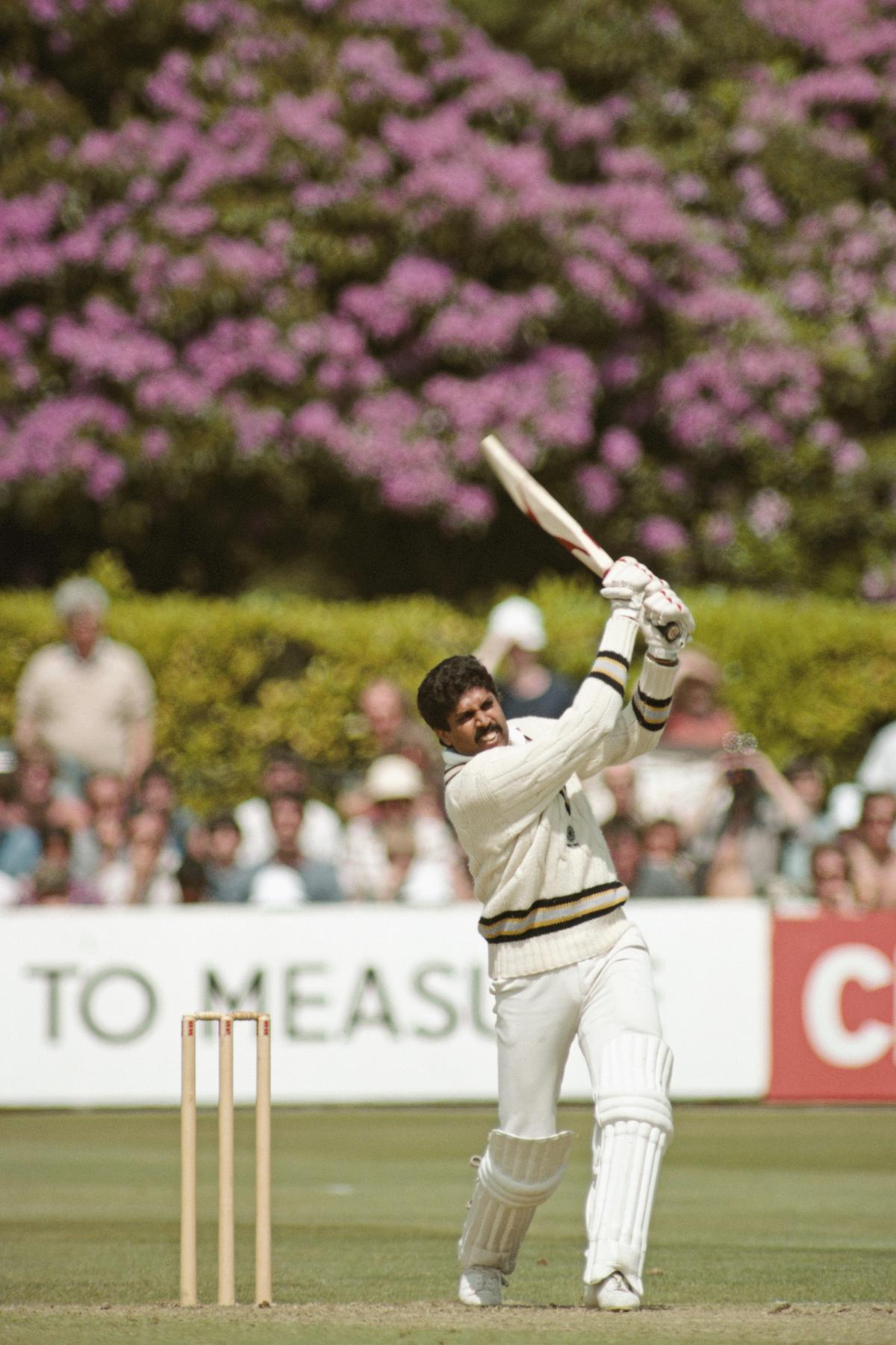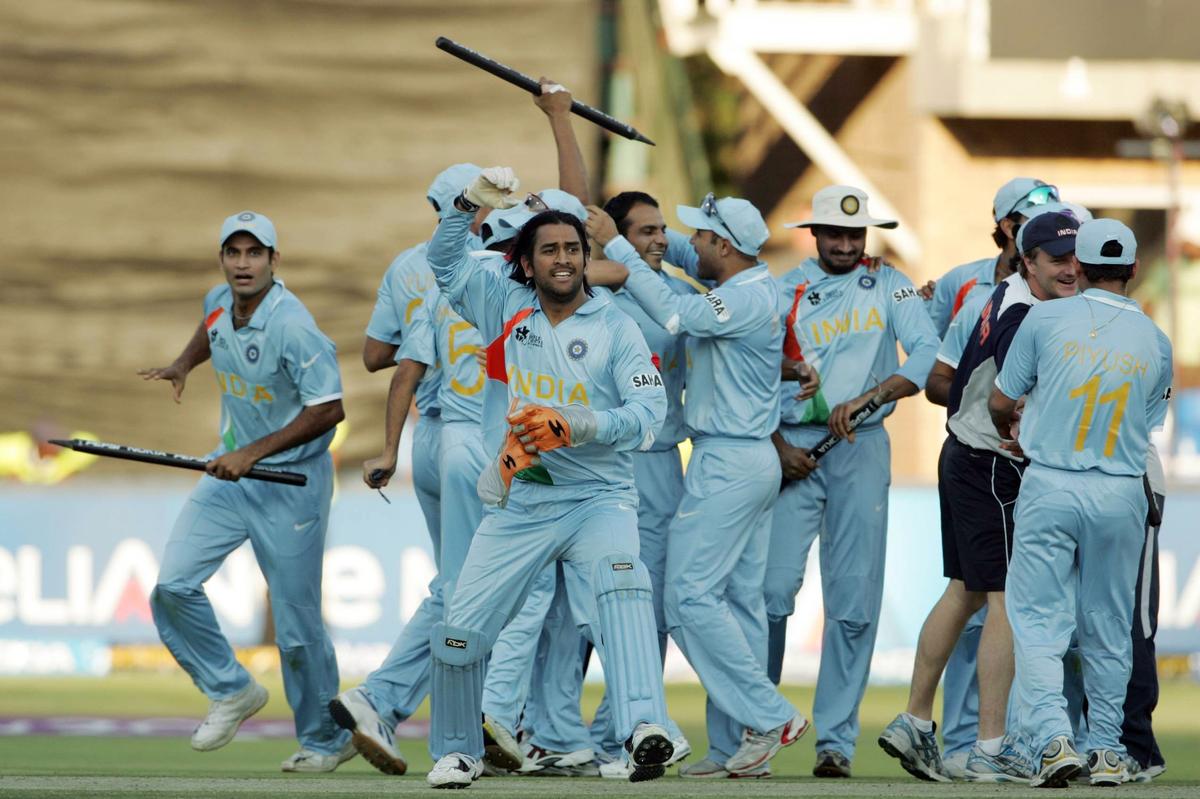Grown men wiping tears, losing themselves in bearhugs, laughing with abandon and a captain pinching a little soil from the pitch and tasting it: these were all images that leapt across from Bridgetown in Barbados last Saturday. India had again won an ICC title, the T20 World Cup at that, to end the long drought that began after the 2013 Champions Trophy victory in England.
Rohit Sharma’s men remained unbeaten in the championship and importantly held their nerve when South Africa threatened to pocket the match while chasing India’s 176 for seven. A seven-run win was snatched and India had another piece of ICC silverware in its cupboard, which now features the 1983 and 2011 World Cups, the 2002 and 2013 Champions Trophy titles, and the 2007 and 2024 T20 crowns. We are talking intercontinental tournaments here and not Asia Cups and other similar events.
Five-decade journey
While Rohit, Virat Kohli, Axar Patel, Jasprit Bumrah, Hardik Pandya, Suryakumar Yadav and Arshdeep Singh all played their parts in the summit clash, be it through leadership, batting, bowling or fielding, it is also time to record the manner in which India has evolved in limited-overs cricket over the last five decades. Often coy to embrace any new development in the willow game, India would hesitate at the start, take its time and then suddenly woo that same format with the ardour of a college kid in the throes of first-love excitement.
When ODIs first surfaced and that too the 60-over-per-side version, India took its time in the World Cups, so much so that across the 1975 and 1979 editions, the only triumph was secured against East Africa, a team which no longer exists. Back then, India was the land of the twirly men, as spinners of the calibre of Bishan Singh Bedi ruled the roost. Seamers were there to help the red cherry lose its shine before the quartet ambled in with their slow-art and secured great wins in Tests.

Changing history’s course: Kapil’s stunning 175 n.o. in the 1983 World Cup was perhaps the moment that made Indians believe no cricket match is lost until the last ball is bowled. | Photo credit: Getty Images
The ambivalence towards ODIs was evident in India’s first ever World Cup game. During the inaugural 1975 edition, chasing host England’s 334 for four, India finished with 132 for three, with Sunil Gavaskar remaining unbeaten on a 174-ball 36. To be fair to the great opener, he had gone on record saying it was a frustrating phase and he tried to get dismissed but to no avail.
Cut to 1983, India was clued in to the instant thrills permeating ODIs. Kapil Dev led an exuberant bunch and on June 25, the World Cup was won while the mighty West Indians were humbled. This was a classic David quelling Goliath episode, and from that moment, ODIs were embraced with gusto. All the theoretical embellishments that later became part of cricket’s limited-overs discourse were seemingly ushered in by India even before those terms came into vogue.
Think pinch-hitter then go no further than K. Srikkanth; think bits-and-pieces then rest on Roger Binny, Kirti Azad and Madan Lal; think all-rounder then anoint Kapil upon that mighty throne; think smart batting then you have Gavaskar, Dilip Vengsarkar, Mohinder Amarnath and Sandeep Patil to revel in. The cogs were in place, to this add the right attitude and sharp fielding, and India was bound to prosper.
India winning the Benson and Hedges World Championship of Cricket at Melbourne in 1985 was proof that 1983 wasn’t a one-off miracle. This squad, led astutely by Gavaskar, also had the added youthful vigour of Mohammad Azharuddin, Sadanand Viswanath and Laxman Sivaramakrishnan, while Ravi Shastri, full of chutzpah, was named the Champion of Champions and took his ecstatic teammates on a merry spin in the Audi that was gifted to him.
In the spirit of things
That the ODI spirit was fully imbibed was evident in the 1987 World Cup at home and co-hosted with Pakistan. Gavaskar smashed a hundred (103 n.o., 88b, 10×4, 3×6), his lone one in ODIs, against a hapless New Zealand while Srikkanth looked bemused. It was great fun to watch and in the same championship, Navjot Singh Sidhu was scraping the skies with massive sixes off traumatised spinners.

The start of an era: Once M.S. Dhoni and his merry band won the inaugural ICC World T20 in South Africa in 2007, India’s Twenty20 love affair began. | Photo credit: Getty Images
India stumbled in the semifinal against England but the point is, in almost every multi-team limited-overs championship since that heady June day in 1983, the Indians were considered a threat to the other squads. Credit has to be bequeathed to what Kapil achieved in 1983. His unbeaten 175 against Zimbabwe is perhaps one of the greatest ever ODI knocks. “The match was not telecast, such a pity, maybe the BBC thought it wasn’t worth it, apparently there was some strike,” Syed Kirmani, that master wicketkeeper, once said.
Like Don Bradman’s 99.94 Test average, Kapil’s unbeaten 175 has gained a mythical allure. At least there are some clips of Bradman’s batting, but for Kapil just a few photographs from Tunbridge Wells remain. Perhaps it was that moment that made Indians believe that no cricket match is lost until the last ball. A belief that was further amplified by Sachin Tendulkar, Anil Kumble, M.S. Dhoni, Zaheer Khan, Yuvraj Singh, Kohli, Rohit and Bumrah, to name a few, over the years in ODIs and T20Is.
There was also this weird phase when matches would be lost to Pakistan in Sharjah but whisper World Cup and the Men in Blue would thrash their western neighbour even if the overall title wasn’t won. Just as India and its excitable fandom dug into ODIs, cricket welcomed T20s. India’s cricketing administrators and even its leading stars replicated an old habit of hinting that the game’s latest version wasn’t worth their attention.
But once Dhoni and his merry band won the inaugural 2007 ICC World Twenty20 in South Africa’s Johannesburg, another love story found its initial pitch. Gone were those cold vibes, there was a sense of wonder and India was the new convert. Soon the Indian Premier League (IPL) was unveiled in 2008 and the global cricketing landscape changed forever. India’s dalliance with limited-overs cricket gained another fillip when Dhoni held aloft the World Cup at Mumbai’s Wankhede Stadium on an April night in 2011.
Shedding inhibitions
Cut to the latest high at Bridgetown, India has the strength to field multiple units especially in cricket’s abridged formats. Just as Rohit’s men took the flight out of Barbados, an Indian team was already in Zimbabwe, with V.V.S. Laxman stepping up as coach. The IPL has made players shed inhibitions and when a rookie now checks into the Indian dressing room, he is aware of his seniors and equally knows what to expect from rivals on the turf. This is a confidence that has also seeped into the Indian women’s team, as there is a belief that matches will be won.
The men, at least players of the pedigree of Kohli, swear by Tests, and yet all of them have the zest to remain unhinged in ODIs and T20Is, and add fresh chapters to the history books. And Rahul Dravid, that quintessential classical man has the 2001 Eden Gardens Test, as player, and the 2024 T20 World Cup, as coach, to savour. Across formats, India has surely found its metier, this is the reluctant lover now wearing a beach-shirt, strutting around and wooing a gobsmacked audience.
